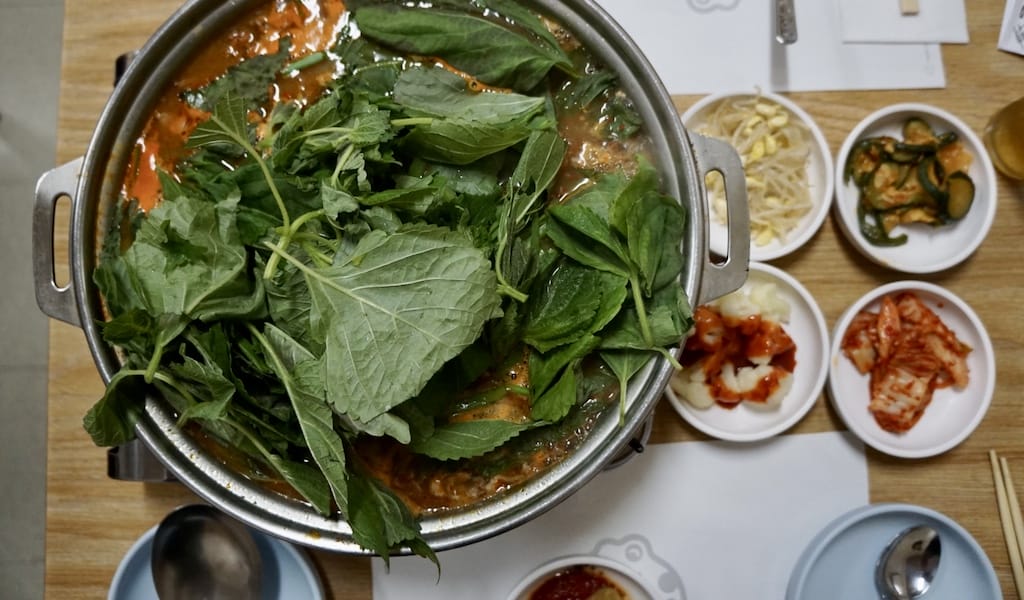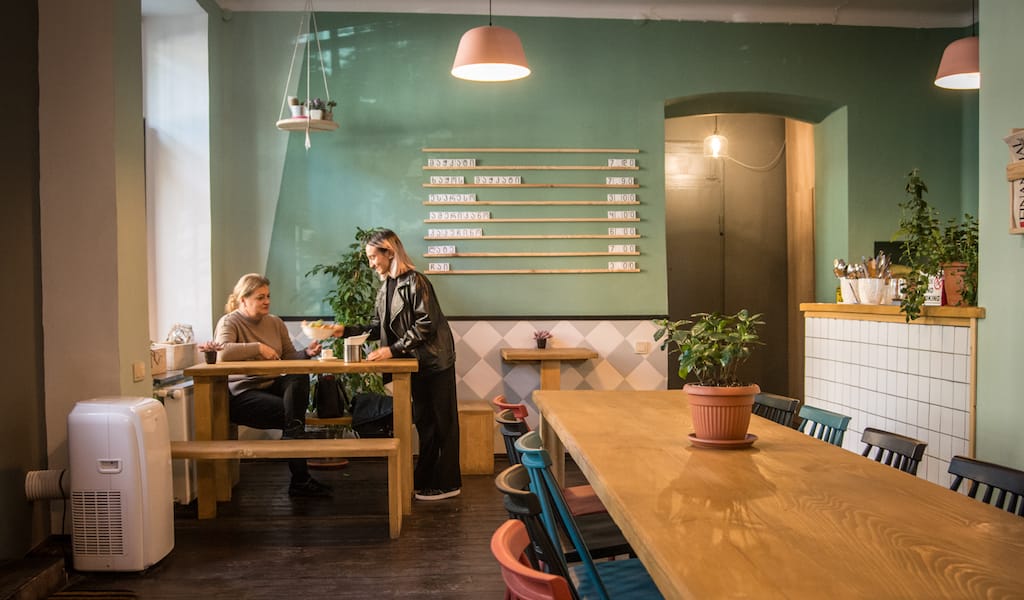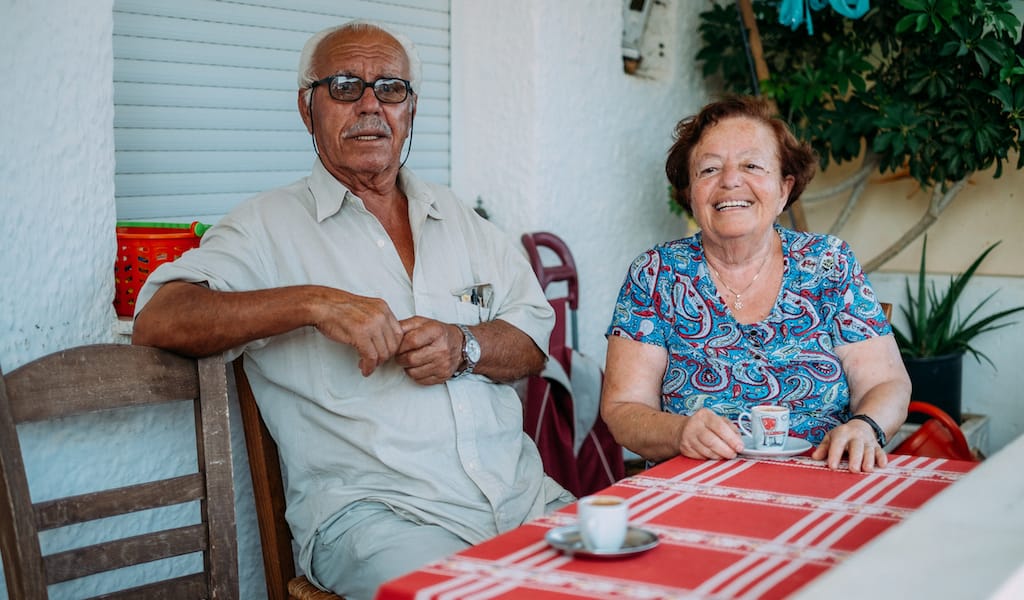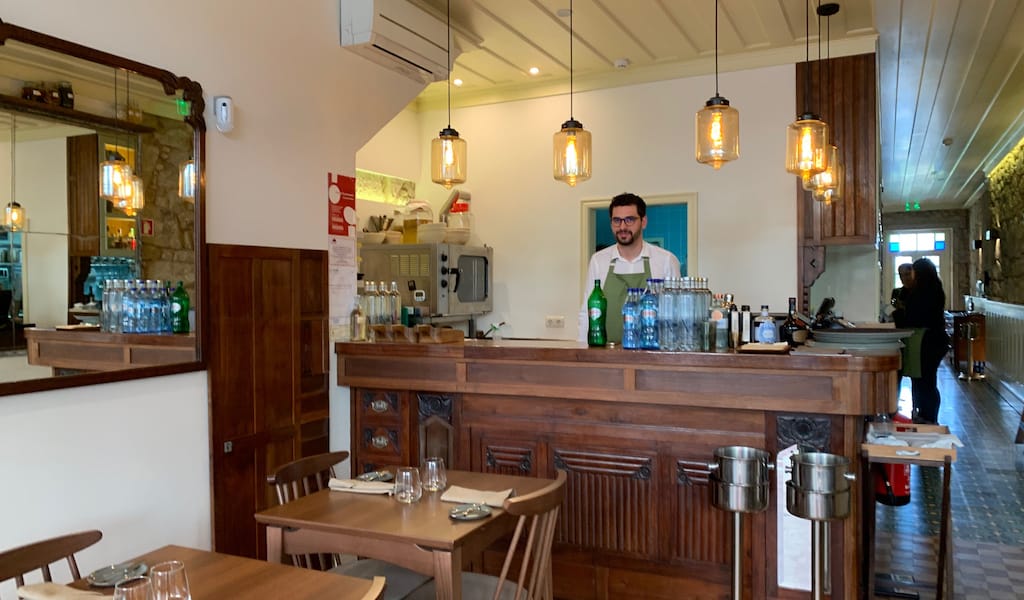It’s no secret that Los Angeles has an amazing Korean food scene. L.A.’s Koreatown is the largest in the United States, with over 500 restaurants, so Angelenos are lucky enough to find restaurants that specialize in less common dishes, beyond the popular Korean barbecue or bibimbap. One such dish is yeomso tang (also spelled yumso tang), a stew traditionally made with Korean black goat meat, which we tracked down at Mirak.
Black goats get their name, naturally, from the black hair that covers their body. They are native to Korea, where eating black goat is believed to have numerous health benefits. Not only is it a leaner meat, it’s also believed to be very nutritious. Many Koreans drink black goat extracts, made by boiling goat meat and bones with medicinal herbs. The extracts are usually sold in pouches and can be found at Korean markets or online. Goat meat stew is a little harder to find, as its stronger odor and flavor are a bit of an acquired taste for some. Most restaurants that serve this dish – the stew is most commonly found in Chungcheong province in the Western part of South Korea – also tend to tout goat meat’s health benefits; online recipes will also recommend eating this dish when you’re feeling under the weather.

The goat meat stew yeomso tang incorporates perilla leaves (aromatic leaves native to East Asia called kkaenip in Korean, similar to shiso) in the stew and perilla seeds for seasoning, both of which are also supposed to be really healthy. Essentially, yeomso tang is said to be the perfect restorative dish to boost your energy and immune system, preventing colds and so forth. The way it is sometimes marketed, yeomso tang claims to be a cure-all – from being good for pregnant women to increasing men’s stamina. Whether or not the medicinal benefits are real, we love eating yeomso tang simply because it’s delicious.
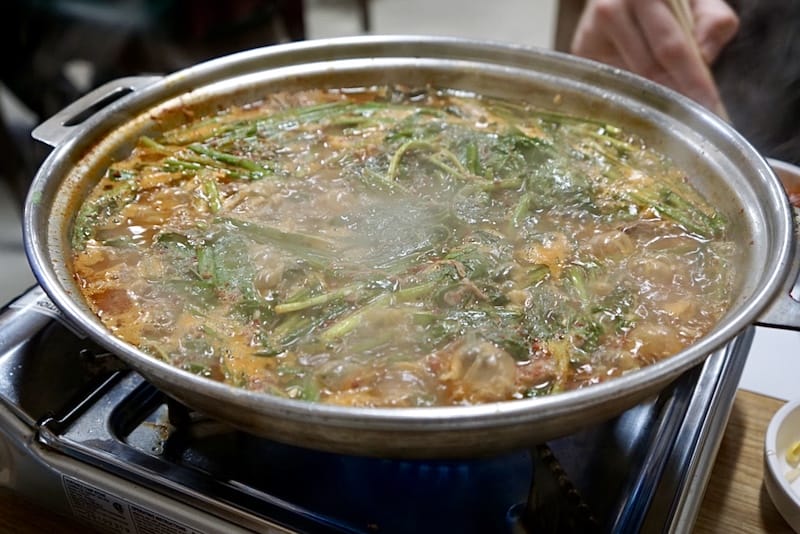
Mirak is one of the few places in Los Angeles where you can get this stew. While there are now a couple more spots in Koreatown to get yeomso tang, Mirak was one of the first. The restaurant opened in 1990 has been going strong and steady since then. Like many Koreatown restaurants, Mirak sits in a strip mall (this one is at the corner of Western Ave and Harrington Ave). The restaurant is marked by a yellow neon sign in Hangul, the Korean alphabet. You can’t see the English sign on the window until you’re already parked, but look for the “Samil Plaza” sign in front of the strip mall. Mirak also has beef and chicken on the menu, but most customers come here for the goat – and you can smell it in the air.
The space is small, with about a dozen tables crowded together. On a busy Thursday evening, most of the customers at Mirak are older Korean gentlemen merrily chatting in Korean while drinking soju or Korean beer. On the tables, various goat-meat feasts are taking place. Mirak serves black goat meat in several different preparations, from boiled goat meat to a dry pot, but the one most first-timers are here for is the yeomso tang.

After we placed our order for the dish, the server put a countertop burner on our table and brought over a large pot filled with the goat stew, topped with a pile of fresh perilla leaves. The pot of yeomso tang is meant for two people, which is actually enough food to feed three (there’s a one-person portion of goat meat on the menu as well, but it’s certainly more fun to have the pot to share). She set the pot on the stove and we waited for our feast, picking at the banchan that was also set on the table: side dishes of beansprouts, kimchi, cucumber kimchi and cauliflowers. As the steam from the boiling stew cooked the perilla leaves, we mixed the leaves into the pot.
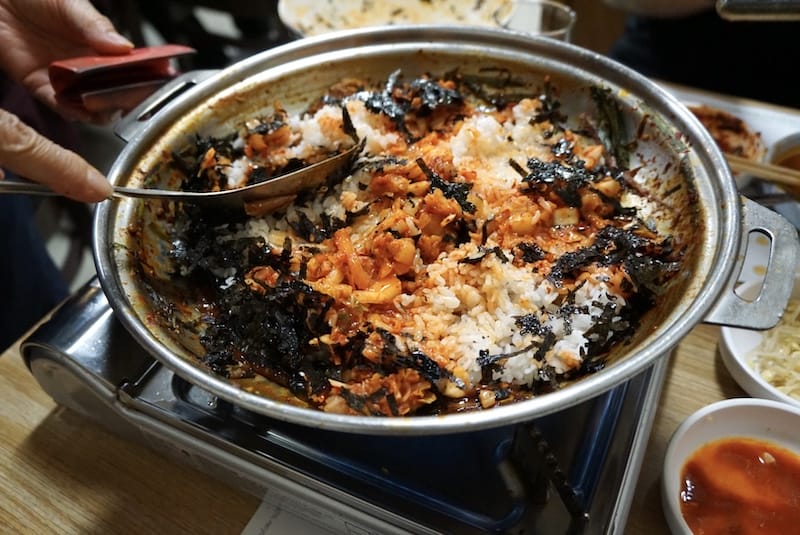
Yeomso tang is made with goat meat cooked in an aromatic soup base with soybean paste and plenty of ginger and garlic, with the meat then shredded into large strips. Goat meat isn’t known to be particularly tender, but in a good yeomso tang, the meat has been cooked until it reaches a pull-apart state. At Mirak, the stew comes with a small dish of dipping sauce which consists of mustard, perilla seeds, sesame oil, scallions and gochujang chili paste. Instead of eating the stew as a soup, Koreans dip the meat in the sauce and eat it separately from the broth. The liquid itself isn’t too spicy but is extremely flavorful from the goat meat, perilla seeds, ginger and garlic.
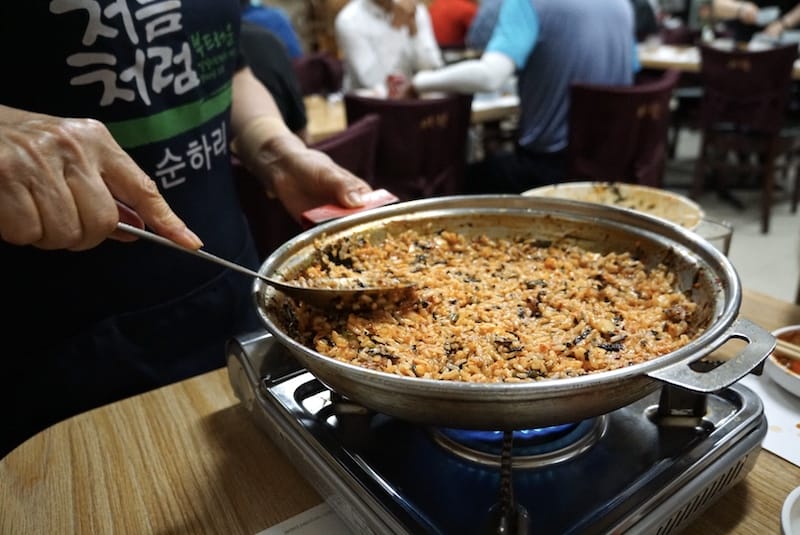
After the goat stew is finished, the meal isn’t over – one of the staff will come over and use the remaining broth to cook kimchi fried rice right in the same pot. We all love a good table-side presentation, and this is no exception. White rice, kimchi, the broth, and small strips of seaweed are mixed expertly together in the pot right there on the table. We wait until the rice at the bottom of the pot becomes crispy. Nurungji, or the lightly scorched rice from the bottom layer of the pot, is the most desired part of the fried rice for those in the know. Of course, it’s hard to refrain from eating until the rice is scorched enough.
We arrived at Mirak without being in need of any particular restorative cure. Nonetheless, we left feeling rejuvenated and energized – the way only a good meal can make one feel.
 November 15, 2021 Kikliko
November 15, 2021 Kikliko
The Georgian culinary experience is all about the dinner, stereotypically a glutton’s […] Posted in Tbilisi August 31, 2018 Taverna tou Veletakou
August 31, 2018 Taverna tou Veletakou
The geography of Lavrion, a seaside town located in southeast Attica, about a 45-minute […] Posted in Athens February 8, 2022 Almeja
February 8, 2022 Almeja
Thirty-year-old João Cura and his wife, 29-year-old Sofia Gomes, may be young but they […] Posted in Porto
Published on October 24, 2023
Related stories
November 15, 2021
TbilisiThe Georgian culinary experience is all about the dinner, stereotypically a glutton’s nirvana of singularly delicious foods stacked plate by plate to the ceiling alongside beer pitchers full of wine. This might explain why, after a night of belt-popping gourmandizing, there is very little in the way of a breakfast culture in Tbilisi. Another explanation…
August 31, 2018
AthensThe geography of Lavrion, a seaside town located in southeast Attica, about a 45-minute drive from downtown Athens, has played a big role in shaping its population. The most important factor is Lavrion’s proximity to the sea. With an abundance of fish and seafood at its doorstep, as well as a marina and port, it’s…
February 8, 2022
PortoThirty-year-old João Cura and his wife, 29-year-old Sofia Gomes, may be young but they have long had a wish to open their own restaurant. Yet it was never totally clear where or when they would fulfill this dream: both are originally from Coimbra, a city in central Portugal, and worked for years in Barcelona. The…







































